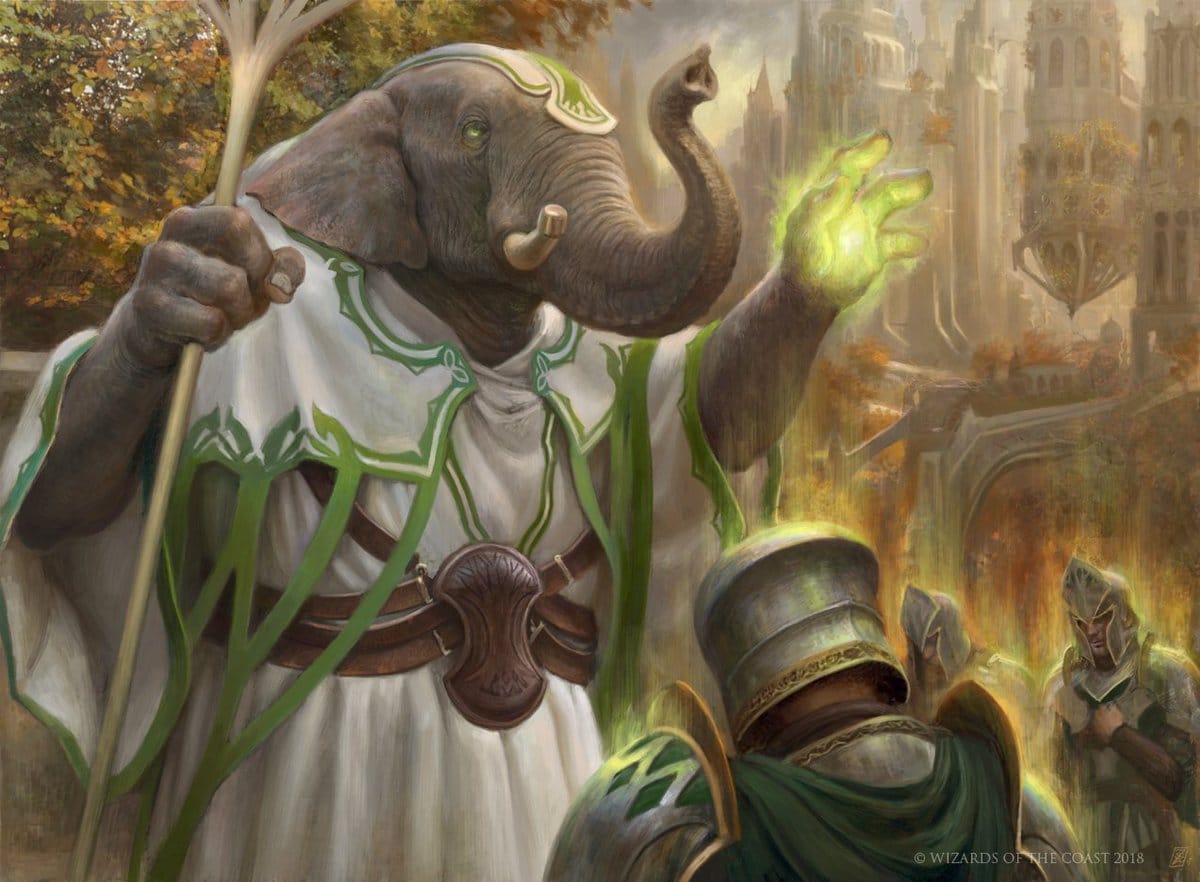Loxodon Guide 5e
Published on April 29, 2021, Last modified on May 5th, 2022

Zack Stella - Wizards of the Coast - Venerated Loxodon
What is this guide?
This guide is meant to give you an idea of whether or not the loxodon will be right for your 5e character build.
The color code below has been implemented to help you identify, at a glance, how good that option will be for your loxodon. This color coding isn’t a hard and fast rule; there are plenty of sub-optimized options out there that will be viable to your party and will be fun to play.
- Black is a trait shared by many races and or will not impact the effectiveness of your character build
- Red isn’t going to contribute to the effectiveness of your character build at all
- Orange Situationally good, but a below-average option otherwise
- Green is a good option
- Blue is a great option, you should strongly consider this option for your character
- Sky Blue is an amazing option. If you do not take this option your character would not be optimized
Tasha's Cauldron of Everything Update
Tasha's Cauldron of Everything has added the "Customizing Your Origin" option that may affect the ability score increases, languages, and proficiencies in this guide. To read more about this, visit our D&D Race Guide.
What are Loxodon in 5e?
Source: Guildmasters' Guide to Ravnica
Loxodon are humanoid elephants native to the plane of Ravnica. These 7 foot tall elephants value wisdom and peace over everything, and do not consider their kind to reach adulthood before the age of 60.
Loxodon are extremely loyal and can be quite fearsome when they or their friends are threatened. Although they are very large and strong, they are known to be skilled artisans, especially when it comes to stonework.
Most loxodon are members of the Selesnya Conclave, although some have been known to join the Orzhov Syndicate and the Azorius Senate.
Loxodon are a playable race found in Guildmasters’ Guide to Ravnica.
Loxodon 5e Traits
Ability Score Increase: +2 CON and +1 WIS is only good for a select few builds.
Age: Loxodon live about 450 years, which is much longer than most playable races in D&D 5e. This means that aging magic is less devastating for them if they happen to be affected by it.
Size: Medium is the typical size of most races, and is neither good nor bad.
Speed: Loxodon have a standard walking speed of 30 feet.
Powerful Build: Not everyone plays with strict carrying capacity limits, but Powerful Build can let you get away with some nonsense if you are a hoarder. Being able to push, drag, or lift additional weight is more interesting and is likely to come up in a campaign.
Loxodon Serenity: Charmed and Frightened are annoying conditions when you are hit by them. Getting advantage on saving throws makes the chance of success much higher.
Natural Armor: Natural Armor is really great if you are running around without armor or are playing a class that has a difficult time pumping their AC. You can use a shield with Natural Armor so you should be able to get a sizeable AC score.
Trunk: Having a trunk opens up many possibilities to be creative and to do funny things, as long as your DM lets you. Simple tasks like using the trunk as a snorkel or using it to move light objects can be really useful in the right circumstances.
Keen Smell: This trait is great when a check relies on smell, but that is very situational.
Sources Used in This Guide
- BR: Basic Rules
- GotG: Bigby Presents: Glory of the Giants
- SotDQ: Dragonlance: Shadow of the Dragon Queen
- ERLW: Eberron: Rising from the Last War
- EEPC: Elemental Evil Player’s Companion
- EGtW: Explorer’s Guide to Wildemount
- FToD: Fizban's Treasury of Dragon
- GGtR: Guildmasters' Guide to Ravnica
- MotM: Monsters of the Multiverse
- MToF: Mordenkainen’s Tome of Foes
- MOoT: Mythic Odyessys of Theros
- PAitM: Planescape: Adventures in the Multiverse
- PHB: Player's Handbook
- SAiS: Spelljammer: Adventures in Space
- SCoC: Strixhaven: A Curriculum of Chaos
- SCAG: Sword Coast Adventurer’s Guide
- TCoE: Tasha’s Cauldron of Everything
- TTP: The Tortle Package
- WBtW: The Wild Beyond The Witchlight
- VRGtR: Van Richten's Guide to Ravenloft
- VGtM: Volo's Guide to Monsters
- XGtE: Xanathar’s Guide to Everything
